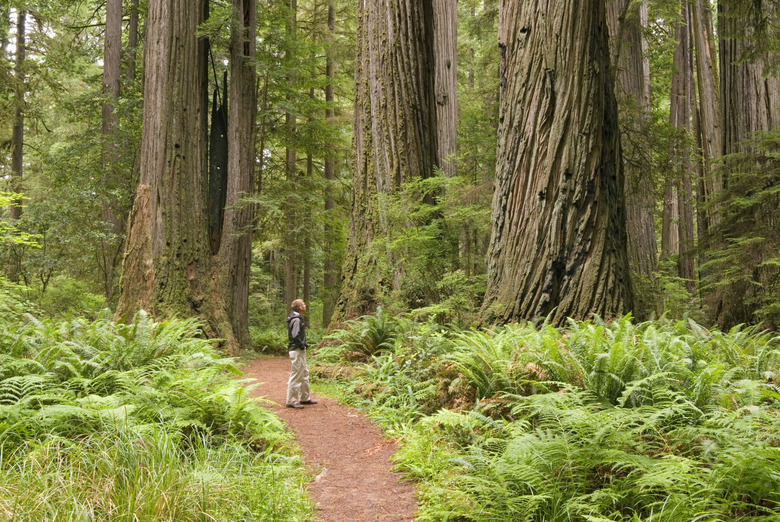How To Grow A Live Redwood Burl
At the base of a redwood tree (Sequoia sempervirens) are lumpy, gnarled growths called burls. Inside them are buds that sprout if the redwood dies. The shoots form new trees, preserving the genetic code of their parents. Important to forest regeneration, burls are at risk because the highly patterned wood they contain is valuable. As redwood forests disappear because of logging, poachers illegally harvest large burls from public lands, damaging redwood trees. Sometimes you find redwood souvenirs of small, legally harvested burls. These sprout in water. They might not root, but the shoots can live for several years.
Getting Started
A living but dormant redwood burl doesn't look very viable. It has a flat side where it was cut from the tree and a lumpier, curved side that contains the buds that will sprout. Choose a low-sided container that will hold the burl with an inch or two of extra room along its sides. If you're going to display your sprouted burl, consider using an ornamental plant saucer or decorative shallow bowl. Add about 2 inches of water and put the burl into the container, flat side down. Place the container and burl in bright light and add water as needed to maintain the level.
Sprouting the Burl
Usually the burl begins to sprout after a few weeks. Peter Del Tredici, director of Harvard's Arnold Arboretum, had redwood burls sprout within a week or two after placing them in water. The new growth is rather ferny-looking because of the redwood's fine needles, and a number of shoots usually emerge. You can allow all of them to develop or you can perform selective pruning to thin out the growth. The redwood shoots get taller as time goes on. The shoots can last for several years. Usually they eventually die because of over- and under-watering or from fungus disease.
Rooting the Burl
Sometimes burls will form roots, and then they should be treated as you would a redwood seedling, planting it in potting mix. To increase the chance of a burl forming roots, follow Del Tredici's example. He put sprouted redwood burls inside a greenhouse with plenty of water and light, and the burls grew roots after six months to a year.
Potting a Rooted Burl
Choose a container with drainage holes slightly larger than the burl's diameter. Use a well-draining mix such as a quality soilless potting mix. Make your own by combining 2 parts of peat moss with 1 part each of vermiculite, perlite and pine bark. Hold the burl in the pot at about the level you'd like it to be and fill in around the roots with the potting mix. Tap the pot occasionally to remove air pockets. Water the container until water comes through the drainage holes. Place the pot in partial shade. Keep the soil evenly moist. If you live within redwood's U.S. Department of Agriculture plant hardiness zones 7 through 10a, you'll eventually be able to plant the rooted burl outdoors. Redwood needs a large space and is capable of reaching 120 feet tall. If the burl must remain in limited space, consider training it to be a bonsai subject.
